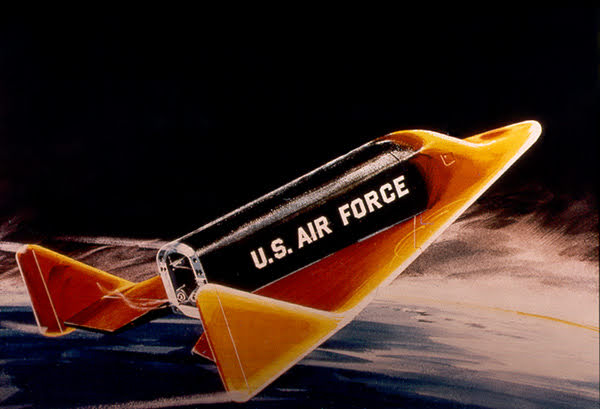Hypersonic Space Plane
During the years 1959–1962, the United States developed a hypersonic space plane, long before the current craze for hypersonic weapons. The X-20 Dyna-Soar (Dynamic Soaring) could be flown again and again with just one pilot. Numerous missions were planned for the X-20 by the Air Force and Boeing before it was canceled in 1963. The X-20 could have been used for spying on the Soviet Union, conducting scientific research, or even carrying out hypersonic bombing raids.
The X-20 appeared to be a potentially historic vehicle. Is there any reason not to immediately move from a prototype vehicle to an operational weapon used against the Soviet Union? What happened, according to an expert:
The Defense Department insisted that it serve a specific military function. The X-20 never made it past the prototyping stage because it was too expensive to be used as a technology testbed and research vehicle. Boeing and the military have put $ 410 million ($ 3.5 billion in 2015 dollars) into the project.
Experimental Military Aircraft
It was a fascinating undertaking that showed promise but was ultimately too ambitious. The X-20 paved the way for a reusable spaceplane similar to the space shuttle, which would be launched by a rocket, complete its mission, and then land on an airstrip.
With a total length of 35.5 feet, the Dyna-Soar prototype also featured swept delta wings with a span of 20 feet. Its rounded design lacked the typical fighter plane's hard edges. Landing gear were retractable struts rather than wheels. Along the underside of the X-20 were heat-resistant superalloys like molybdenum, graphite, and zirconia.
The Dyna-Soar was piloted by several astronauts, one of whom was Neil Armstrong, a 30-year-old test pilot and aerospace engineer. After launching the X-20 from a B-52 bomber, the pilots were supposed to begin test flights to gather data. At a Las Vegas exhibit, the public got a chance to see the X-20 for themselves, and they were not disappointed. As for the rocket launch, that went well, too.
The future prospects for the Dyna-Soar appeared promising. It had unusual flight parameters, as it was designed to bounce and skip through the air. According to Robert F. Dorr, "at every stage of its design and development, the Dyna-Soar was capable of being a fully orbital spacecraft, but as the program progressed, the emphasis remained on the spacecraft's capabilities," as reported by Defense Media Network. rocket ships capable of suborbital hyperspace travel vehicles capable of "leaping" through Earth's atmosphere (in space)
X-20 Dyna-soar Model Kit
The designers weren't worried about how difficult the technical challenges would be to overcome. They even dreamed up a hypersonic recon bomber version they called the Dyna-Soar III. Such velocities enabled the spacecraft to issue a warning to the enemy radar in just three minutes, as opposed to the 20 minutes required by an ICBM. Instead of being stuck at its original target, unlike an ICBM, it could be redirected or recalled.
Additionally, the Dyna-Soar III was supposed to perform overflight reconnaissance missions. "It could glide over enemy targets between 45 and 90 km altitude, providing better resolution than orbiting satellites at much higher altitudes," writes the space analysis website Astronautics. Instead of waiting days for the capsules to be recovered from spy satellites, the data would be ready for analysis within hours of the overflight. The enemy would have no warning to cover its tracks, unlike a satellite in a predictable orbit.
It seemed like Dyna-Soar III had the required "military purpose" for the government. The spacecraft designs were optimistic, however, and hundreds of millions of dollars more would be required to build a fully functional craft. It would take until the early 1970s for the Dyna-Soar III to be completed. It would have been too costly and time-consuming. The designers debated over the best option for the rocket's propulsion system. Politics and disagreements between policymakers in the Eisenhower and Kennedy administrations over whether or not the Dyna-Soar program qualified as a civilian or military space project ultimately doomed it. Funding ceased because Defense Secretary Robert McNamara was not a supporter. In 1963, after McNamara said "no joy," the Dyna-Soar program was cancelled.



